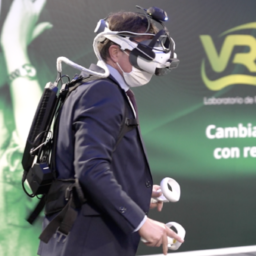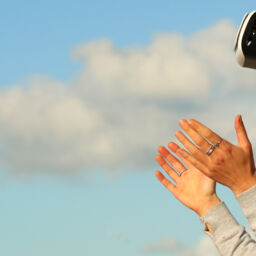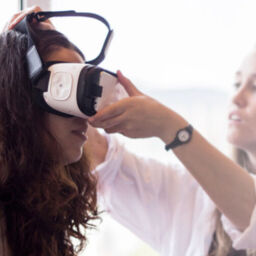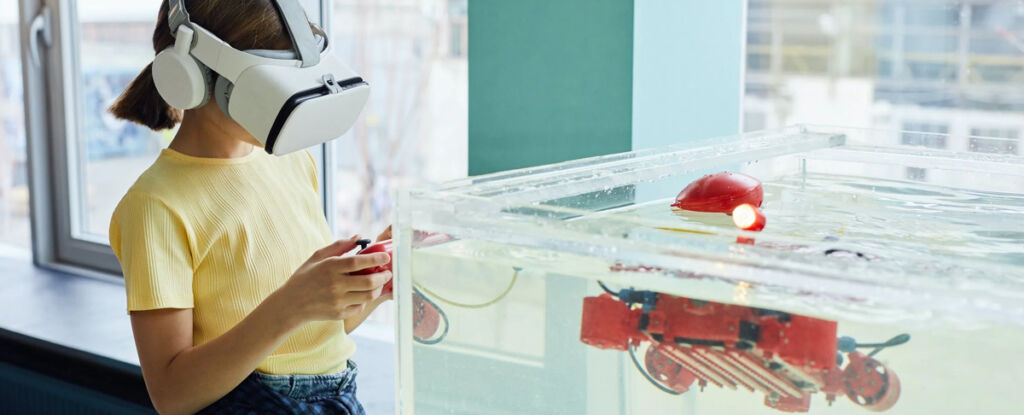
The advantages of Virtual Reality Laboratories in the educational environment
Every day students are closer to the technological devices they use to communicate and carry out activities in their academic environment, added to the precedent that confinement and the global situation have led them to appropriate digital resources and open themselves to the new capabilities it offers virtual reality. in different sectors of society.
For this reason, these immersive technologies have great potential in the field of learning, contributing to one of the main Sustainable Development Goals, SDG#4, which focuses on Quality Education, and which, according to the UN, seeks to citizens have inclusion, equity and learning opportunities.
Not far from this purpose, the use of spaces such as virtual reality laboratories allows people of any age to have the opportunity to improve their teamwork skills, evaluate their improvement options in less time, motivate themselves to work with ICT and power practice with multisensory environments. All of the above, valuable skills to develop in the educational field.
In addition, the Virtual Reality Laboratories provide the possibility of remote access to multiple users through the Internet, while allowing flexibility in the use of existing technological devices such as desktop computers, tablets and Virtual Reality glasses. These interactive developments enhance the teaching process by presenting content and help increase job skills that are currently required in the workplace.
Below is the graph of the result of a study by Saga University in Japan in which, through an electroencephalogram (EEG), it was shown that students who had virtual reality classes concentrated up to 6 times more and lasted longer:
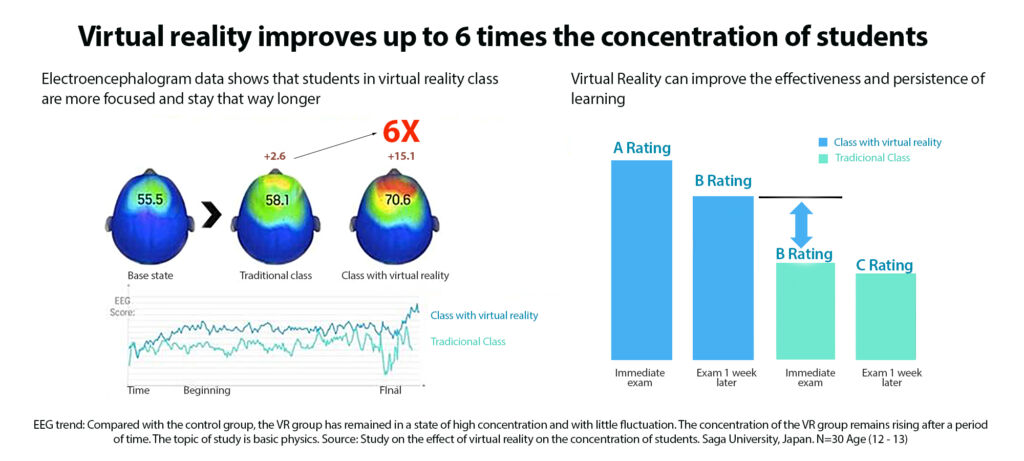
Graph: VR study in students of the Saga University of Japan
TYPES OF VIRTUAL REALITY IN EDUCATION
In the educational environment, different experiences based on virtual reality can be provided, classified according to the level of immersion:
- Non-immersion experience: 3D images and audiovisual content from a computer or cell phone, which can also be projected.
- Augmented Reality: Adds 3D overlays to the real world to view through a mobile device (phone or tablet).
- semi immersion:high or low quality virtual reality glasses with the help of motion equipment, audio devices and/or screens, such as simulators.
- Immersion (virtual reality laboratory): No computer or sensors needed. The content runs directly on the glasses. You can turn your head in any direction and move around in the virtual world. It has controls to interact with the contents.
CASE OF SUCCESS
At Virtual4, specialists in immersive technologies with social impact, we have developed the Virtual Reality Laboratory of the Ean University of Bogotá, an educational innovation project that contributes to the development of the future and social impact in Colombia. If you want more information about the project or want to know how to implement a virtual reality laboratory in the educational field, contact us here.
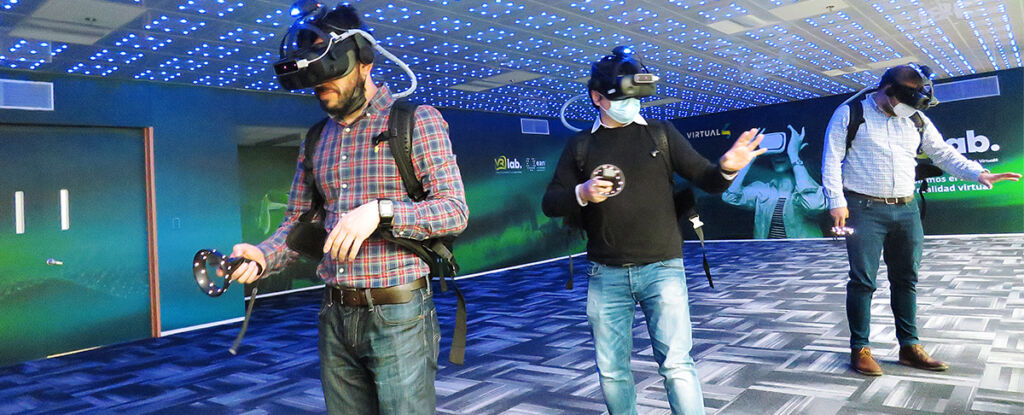
Photography: Virtual Reality Laboratory of the Ean University in Bogotá, Colombia.
References:
https://www.cienytec.com/picts/vrlab-concentracion-9×4.jpg




